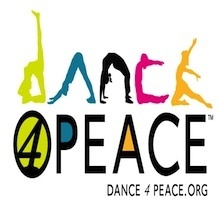
Maya Kumazawa
Civic Engagement in the Arts...In Action (Part 1)
Posted by Sep 22, 2011

Maya Kumazawa
 For the last two posts in a series on how the arts can foster community engagement, I interviewed Sara Potler, founder and CEO of Dance 4 Peace (D4P), a global peace education and civic engagement nonprofit that engages young people through dance and creative movement.
For the last two posts in a series on how the arts can foster community engagement, I interviewed Sara Potler, founder and CEO of Dance 4 Peace (D4P), a global peace education and civic engagement nonprofit that engages young people through dance and creative movement.
D4P inspires a generation of leaders and peacemakers through an innovative curriculum that promotes empathy, mediation skills, anger management, and conflict resolution to instill social and emotional competencies for peace.
Sara shared with me her perspectives on the arts, civic dialogue, and sparking social change through dance.
Q (Maya): How can the arts create civic dialogue? And how does Dance 4 Peace serve as a leader for community engagement?
A: (Sara): The role of the arts in society has long been to start difficult, even disruptive conversations. Whether dance, or fine arts, or spoken word, these tools have been extremely valuable in bringing together communities around a single thought or idea and then inspiring them to take action.
Dance 4 Peace builds on this legacy of using the arts to spark social change. Our classroom activities involve students in civic dialogue, although we aim to use our bodies more than our words to express ourselves. As a leader in community engagement, we view our students and schools as active participants in shaping the curriculum and driving the choreography and creative movement in the classroom.
Read More










 With October right around the corner, we all have the opportunity to commemorate the arts in a big way by participating in
With October right around the corner, we all have the opportunity to commemorate the arts in a big way by participating in 



